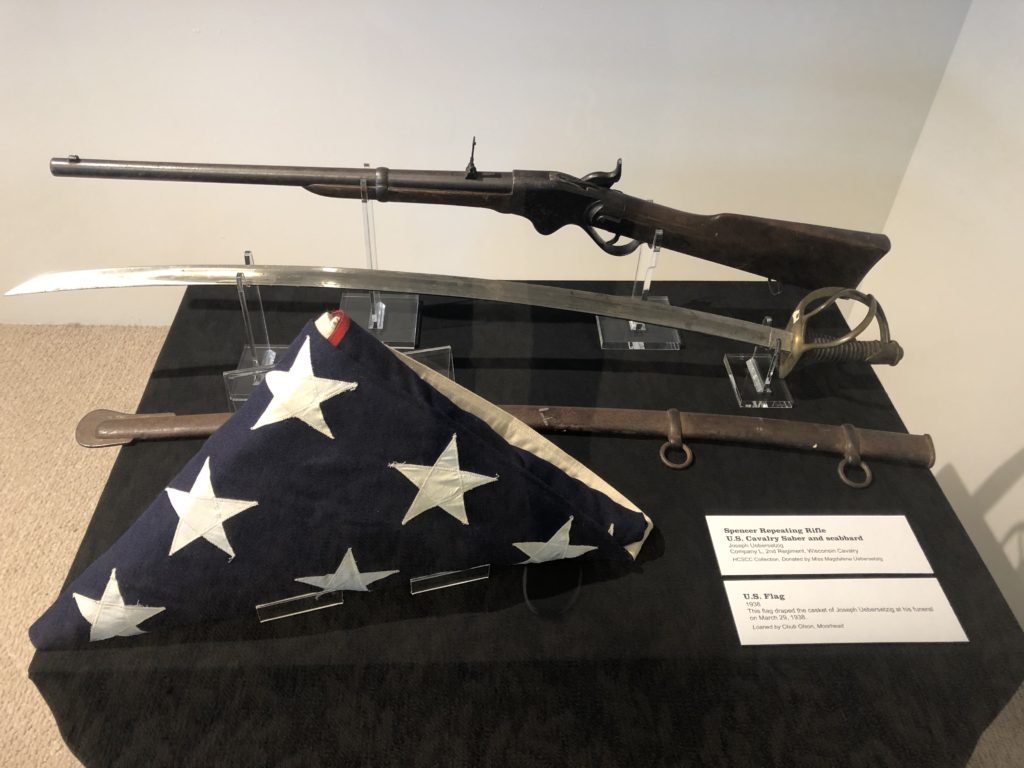
clay county histories
Markus Krueger | Program Director HCSCC
Our museum at the Hjemkomst Center has reopened from noon-5pm every day! And we have an exhibit that, as a Civil War buff, I am VERY excited about. We have our best Civil War artifacts on display to talk about the Grand Army of the Republic.
Before the VFW and the American Legion, there was the Grand Army of the Republic. the GAR was an organization for Union Civil War veterans that did much of what veterans organizations do today: advocate for veterans issues, plan for Memorial Day, and provide a place for old soldiers to be together.
I don’t blame you if you’ve never heard of the GAR – they haven’t been active since Clay County’s last Civil War veteran, Joseph Uebersetzig, died in 1938. The Veterans of Foreign Wars (founded by Spanish American War veterans in 1899), the American Legion (founded by soldiers in Paris on their way home from World War I), and AmVets (founded during WWII), all opened their membership to future generations of vets, but the GAR, like the Vietnam Veterans of America, was dedicated to veterans of a single conflict.
The GAR’s big yearly celebration was Decoration Day, which we now call Memorial Day. Members would lead parades through town, organize a program of speeches and music, and decorate the graves of soldiers in the cemetery. We do this today because of them.
The VFW and American Legion’s tradition of naming their local chapters after a soldier from that town who died in combat (i.e. American Legion Melvin E. Hearl Post 21) comes from the GAR. But when it came to naming the two GAR chapters formed in Clay County, our local Civil War vets had a problem: there were no local soldiers from their towns who died in the war because their towns didn’t exist during the war. Clay County was settled in the 1870-80s. So the 14 founding members from the Hawley-Glyndon-Moorhead area named their post for Glyndon pioneer Lumen H. Tenney, who survived his service with the 2nd Ohio Cavalry but had died four years before his friends founded Post #103 in 1884. The following year, 15 Barnesville area vets formed the Lumen M. Kenfield Post #144, named for a veteran of the 1st Wisconsin Cavalry who had passed away two months prior.
The exhibit features some of our historical society’s most exciting artifacts and profiles some of our founding generation’s most interesting people. You’ll see the officer’s sword of Capt. Luther Osborn, whose regiment of African American soldiers served as Abraham Lincoln’s bodyguard as the president walked through the streets of the Confederate capitol. You’ll hear how Buffalo River State Park was once the estate of the dashing Capt. Smyser, who held lavish parties at his mansion on the prairie. And you’ll see the development of a proposed statue for Moorhead’s Felix Battles, who escaped slavery as a teenager, joined the Union Army from Minnesota, and became “the pioneer barber of the Red River Valley.”

